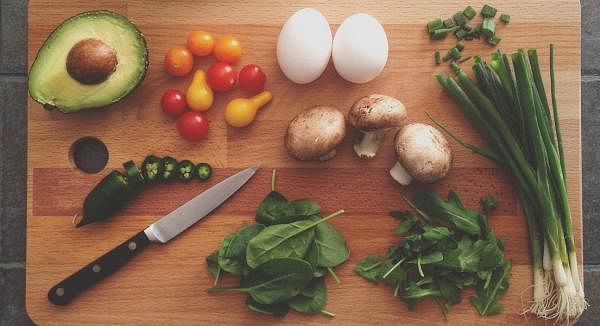Does Eating Protein Before Carbs Improve Blood Sugar?
Why you can trust Nutri Advanced Every article on our site is researched thoroughly by our team of highly qualified nutritionists. Find out more about our editorial process.
A new small-scale study has found that the order in which we eat our food could have an important impact on post-meal blood sugar and insulin levels.
A team of researchers, led by Dr Louis Aronne from Weill Cornell Medical College recently investigated whether eating vegetables or protein before carbohydrates leads to lower post-meal glucose levels.
Eleven patients were recruited for the study, all of whom were obese, had type 2 diabetes and took metformin (medication to help control blood sugar levels). During the study, the researchers tested the effects of eating the same meal but in different orders. In the first week of the study participants ate carbohydrates first followed by protein and fat fifteen minutes later. In the second week they ate the same meal but in reverse order, with the protein, vegetables and fat first and then the carbohydrates fifteen minutes later.
Results showed that glucose levels were much lower at 30, 60 and 120 minute checks when protein and vegetables were eaten before the carbohydrates. Insulin levels were also much lower when food was eaten in this order.
The researchers concluded,
“While we need to do some follow-up work, based on this finding, patients with type 2 might be able to make a simple change to lower their blood sugar throughout the day, decrease how much insulin they need to take, and potentially have a long-lasting, positive impact on their health.”
Source:
Alpana P. Shukla et al. Food order has a significant impact on postprandial glucose and insulin levels. Diabetes Care Volume 38, Number 7, e98-e99, doi: 10.2337/dc15-0429
This website and its content is copyright of Nutri Advanced ©. All rights reserved. See our terms & conditions for more detail.
Nutri Advanced has a thorough research process and for any references included, each source is scrutinised beforehand. We aim to use the highest value source where possible, referencing peer-reviewed journals and official guidelines in the first instance before alternatives. You can learn more about how we ensure our content is accurate at time of publication on our editorial policy.
Most Popular Articles
-
7 Surprising Ways To Support Your Magnesium
If you are displaying signs of a magnesium deficiency, here are 7 ways to boost your magnesium levels that are easy to incorporate into your daily life. -
5 Best Vitamin C Supplements Picked By Our Experts
Learn more about the different types of vitamin C, the different benefits you get from different types, and what you get for spending more on a good supplement. -
Top 5 Vitamins For Energy And Tiredness Picked By Our Experts
The 5 best and most important vitamins for energy & tiredness including B vitamin food sources & best supplement forms for energy. -
Benefits of Myo-Inositol for Polycystic Ovary Syndrome (PCOS)
In this research review article, we take a closer look at a lesser-known natural compound called myo-inositol that has been found to have significant potential to improve many of the prevalent features of PCOS. -
Top 10 Reasons to Give Your Kids Omega-3
Read the top 10 reasons that kids should have plenty of Omega-3- an essential fatty acid- including for depression, brain function, sleep & reading/maths skills.











